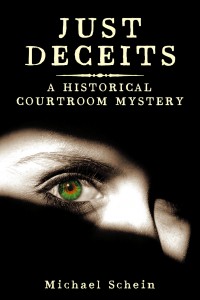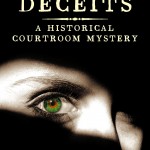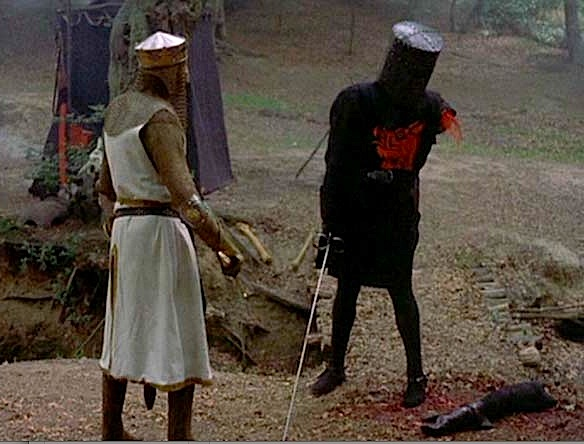
I hope you will pardon a brief digression from the topic at hand — standard format for manuscripts — but something I saw on television last night was such a marvelous example of what not to do in an author interview that I couldn’t resist seizing the opportunity to talk about how to do it better. So while I very rarely comment on pop culture in this forum, I am breaking into our series already in progress to spend a day chatting about what does and does not work in an author interview.
I’m thinking ahead, you see. When you give your first filmed or recorded interviews, I’d like to see you pull it off effectively — and, if possible, in a manner that might conceivably help you sell a few books. (I’m funny that way.)
The interview I saw last night did not, in my opinion, meet those minimal criteria for interview success. For the sake of those who do not have time or be in a space that allows for running acrimonious video clips, though, I shall give a general description of what happened before starting to talk theory.
Basically, this author (who shall remain nameless throughout, as I have not read his book, and I don’t want any of this to be construed as a review of it) fell into a trap that book-promoting authors — particularly first-time authors — tumble into all the time: he seemed to forget that what he was doing there was promoting his book.
Oh, you may laugh, but it happens all the time. In the excitement of dealing with public attention, it’s very, very easy to forget that the person in front of you — be it talk show host (as in this instance), radio host, a freelancer who picks up extra cash by interviewing authors, or even a question-asking audience member at a book reading — did not walk into the room because you’re a fascinating person. If you’re an author booked for an interview, the interviewer is there to talk about your book.
As, incidentally, are you, if you’re on a book tour. If you should also happen to be a fascinating person, well, that’s just icing on the cake.
The cake itself is your book and your ability to talk about it in such a way that readers, hearers, and/or audience members will remember your name and the book’s title after the interview ends. If you can also manage to talk about your subject matter in such a way that it causes these people to murmur, “My, but that sounds like an interesting book; I think I shall check it out,” well, let’s just say that your publisher will be grateful.
True, your mother may wonder why you didn’t mention your fourth-grade softball team, but trust me, everyone else who participated in your book’s road to publication will be happy that you remembered that the author’s job in the interview is to make the book, not himself, look good.
I can say it in three or four more ways, if it’s still not sinking in. Trust me on this one: if you have any significant success in a writing career — and I sincerely hope that you do — it’s advice that will serve you well.
Seriously, if you take nothing else from this post, please, I implore you, cling like a leech to the notion that a book-promoting author is first and foremost a marketer. That way, you’ll never find yourself in the hideously embarrassing (yet disturbingly common) position of realizing after an interview is over — or, sacre bleu! after it’s already aired or been published in a magazine — that you were chatting away as if everyone in the audience were waiting breathlessly to hear your opinion on everything but your subject matter.
“Book?” audience members and readers say after such interviews. “What book? I just thought that guy was there as a pundit. Was I supposed to remember anything else but what side he took in the debate?”
Speaking of erring on the side of punditry, as you may already have gathered from my vehemence on this particular point, the author in today’s example did not, in my opinion, consistently bear in mind that he was at least ostensibly there to promote his newly-released book. Stepping almost completely into the role of opinion-giver, he got into an argument with the interviewer, not a bad strategy for a pundit, but almost always a losing proposition for an author promoting a book.
The result: the author lost his cool during a nationally televised interview, so much so that by the time the segment ended, he was actively arguing that the host should waive the length restriction and allow him to keep talking uninterrupted “to make the points I came here to make.”
As someone who has both conducted and given many, many interviews, I’m here to tell you: that’s not a request that’s at all likely to be granted by a friendly interviewer. The chances of an interviewer the interviewee has already insulted agreeing to such an arrangement are roughly equivalent to the probability that dinosaurs will spontaneously appear in each of our back yards first thing tomorrow morning, bearing gift baskets of freshly-baked croissants.
Let’s just say that your flowerbeds are safe from dinosaur-trampling.
The weird thing, from a book-promotion perspective, was that in promoting this book on this particular talk show, an argument was 100% predictable, and thus could have been prepared for with ease. The author was promoting an overtly political book on a television show whose host (and studio audience, apparently) did not concur with his political opinions. Which happens all the time, right? Surely, anyone who had watched the show before — as any reasonably prudent author should always do before giving an interview on it — would have been able to predict the likelihood of a political debate ensuing.
As, indeed, an author of any kind of controversial book might reasonably expect in any interview situation. If one of your book’s selling points is its potential to spark debate, you would walk into any interview prepared for a debate to be sparked, right?
But as so often occurs in both television and radio interviews, the author in this case did not seem particularly well prepared for this contingency. Or so I surmise from the fact that by roughly a minute and 45 seconds into the 11-minute interview, the author clearly began to become flustered by the host’s wanting to have a political debate.
On a show that takes as its daily subject matter political news. Who could have seen that coming, eh?
So already, we should be grateful to this author, for he has taught aspiring authors everywhere something about preparing for an interview: watching (or in the case of radio, listening) to at least a handful of episodes of the show is essential to the preparation process. For print interviews, there’s no substitute for reading some recent articles by the interviewer.
Why? Well, can you think of a better way to become aware of any slant the interviewer might have? Or — and this is even more important for an author promoting a book — any particular kind of response that interviewer’s established audience might expect?
As today’s example illustrates so beautifully, it’s really not a good idea to wait until the interview is actually in progress before finding out these things. By 1:45 in, what had been a fairly intelligent exchange of ideas directly related to the topic of this poor author’s book began to degenerate into just another political argument of the type that anyone who has turned on a cable news program within the last couple of years has seen a dozen times over.
Hey, I have nothing against political debates — although I hasten to add that my point here is not to prompt my readers to start arguing about who was right and wrong politically in this instance; we’re here to talk about how to present and promote writing, right? — but in this case, allowing the interview to devolve into one cost the author rather dearly: in the minds of the viewers (who are, he hopes, his potential readers, right?), his book has become just another argument for his side of a political debate, rather than a book about his subject matter.
In other words, his message became generic, rather than book-specific, and therefore much, much easier for potential readers to tune out.
Now, as I mentioned above, I have not read this book; I have no idea how it does or doesn’t resemble other books produced by authors of a similar political stripe. But as someone who frequently promotes books, I can say for certain that when an author presenting himself as an expert on a particular topic stops talking about that particular topic in an interview, it’s usually harder for potential readers to remember what the book’s about after the interview ends.
Tell me: would you feel that was an effective use of your book’s promotional time?
Let’s return to the arguing author — who, regardless of how one might feel about his politics, was by this juncture in an exceptionally hard position for a book-promoting writer. There were 8 minutes and 15 seconds remaining in the televised interview, the argument in progress was veering farther and farther away from the subject matter of his book, and in order to make his book sound authoritative, he needed to make sure viewers understood just how and why he was a credible expert — or, to put it in terms the whole industry could understand, to establish his platform.
Which, frankly, I’m still rather at a loss to explain — and I re-watched this interview three times, in preparation for writing this post. From what I saw in the first 1:45 of this interview, it wouldn’t even have occurred to me that in order to understand his particular corner of the political world, I should rush right out and buy his book.
In other words: the interview up to that point had failed the litmus test of any author interview. It did not interestingly promote the book he was there to promote.
How, then, could he have turned the interview around? What would you have done in his place?
Since my readers are a pretty savvy bunch, I’m guessing that your first answer to that question was not, “Why, I’d start talking over the host, in order to win the argument, with an eye toward talking about my book after I had reduced the host to silence.” That would be a strategically poor choice, right? Not only would virtually any interviewer resent it, but since it renders both sides of a discussion substantially harder for onlookers or listeners to follow, it tends to annoy even a sympathetic audience.
But guess what our exemplar du jour did?
Uh-huh. For most of the rest of the interview. Punctuated, unwisely, by statements like, “Let me get a word in edgewise,” and “Let me make my point.”
Not the best way to endear oneself to any interviewer, and usually not a particularly effective means of garnering sympathy from an audience. Audiences are smart: they can tell for themselves when an interviewee is being bullied.
Which was not, to my eye, the case here, incidentally; I could be wrong about the motivation here, but as nearly as I could tell the author merely seemed to be unused to making his case to people who did not already agree with his political views. Again, rather strange, given that even a passing familiarity with the show would have lead him to expect that.
Here again, though, we writers can learn something from this situation: in preparing for any interview situation, an author should always practice in mock interviews with both friendly and hostile interviewers.
Established authors do this all the time, and for very good reason: if they’re not prepared to parry wittily off-camera and off the record with someone they already know, experience tells them that making being grilled by a total stranger under a studio’s worth of bright lights look easy is going to be, well, hard. Hey, being urbane requires some serious practice.
Besides, it’s a great way to get your more passive-aggressive kith and kin involved in promoting your book. Come on — don’t you have a cousin or former college roommate who wouldn’t just love the opportunity to try to get your goat under the guise of interview prep? Right before you embark on a book tour is a dandy time to put ‘em to work.
Do I see a few hands raised out there in the ether? “But Anne,” some timid souls point out, “what makes you think that last night’s interviewer was not trying to be a bully? I’ve just watched the interview, and the host kept firing questions at the author.”
Good point, timid souls — but if a writer is going on a book tour, or even talk to readers at a book signing, he’s going to need to steel himself to the possibility of being asked questions related to his book. Especially in an interview, because, let’s face it, it’s the interviewer’s job to keep asking questions.
In this case, though, I have another reason for thinking well of the interviewer’s motivations: after the frustrated author had been increasingly talking over him, even mid-question, for quite some time, at 6 minutes and 10 seconds into the interview, the host changed the subject rather pointedly back to, you guessed it, the general subject matter of the book. Which, considering that both parties were visibly annoyed by that point, was actually rather generous of him.
Need I even say that the author did not respond to it that way? Having gotten into an argumentative rhythm, he reacted not by eagerly seizing the opportunity to talk about his book — the reason he had come on the show in the first place, lest we forget — but as an invitation to further debate. But by then, the author was clearly in it to win the argument, period.
Always a bad move in an interview, by the way, even if you’re 100% positive that you are right and the interviewer is wrong. Why? Well, think about it: even in a televised or radio interview, the host is inevitably going to have the last word, right? He can talk about you after you have left; the show’s directors, producers, and editors are going to have the power to edit what you said. And in print, an unfriendly interviewer can simply not reproduce what you said correctly.
Tell me, would you rather have these people on your side, or to win the argument?
Before you answer that, allow me to add that I’m not asking your heart here; I’m asking your head. Specifically, the part of your brain that wants to convince potential readers to go out and pick up a copy of your book.
Winning a short-term argument at all costs no longer sounds like the best long-term strategy, does it? Again, we can extrapolate a general rule: feel free to make your case in an interview, but if the discussion gets nasty or personal, turn the talk back to the book. Remember, your goal here is to get the interviewer to help you promote it, not beat him in an argument.
What can happen if an interviewee loses sight of that goal? Fortunately for our learning curve, today’s example shows us a frequent outcome: about a minute after the host threw the author that lifeline, he visibly gave up on trying to talk about the book. For the next several minutes, the interview once again devolved into a political debate between two people who do not agree about politics.
Good television? Perhaps, but again, I ask you: is this the most efficient use of televised promotional time, from the author’s point of view?
Obviously, this interview was not going well, either on a promotional or personal level, and time was running out. The author had things he wanted to say, so he kept speaking faster and faster, reacting to questions as distractions, rather than invitations to elaborate. Whenever the host tried to jump in, the author kept repeating that he wasn’t being allowed to talk — and kept right on talking.
Sometimes, an author being interviewed in front of a studio audience (as was the case in our example) will respond to conflict by trying to appeal to the audience, rather than the interviewer. Sometimes this works, sometimes it does not. In this case, the latter. Unfortunately — yet absolutely predictably, to anyone who had ever seen the show before — the audience sided with the host, not the author.
How did the author respond to that? Not in a manner at all likely to win any member of that audience over as a potential reader: at one point, he held up his hand to stop the audience from applauding something the host said.
Oh, dear. Need I even tell you how that went over with the audience?
Because I know all of you are kind people and sensitive souls, I tremble to relate what happened in the minute or so that followed this imperious gesture. Suffice it to say that voices were raised, and the host had to hush him in order to announce that they were going to have to break for a commercial. The author made fun of the host for wanting to break for a commercial, wasting still more time that he could have used for, say, making one last attempt to sell his book.
Since the interview had, in fact, already worn on longer than average for this show, the host apparently did need to wrap things up, so as interviewers tend to do, he gave a brief summary of his last point in order to round out the segment. Throughout, the author just kept calling the host’s name, trying to get him to stop.
And then it got worse, from a book-promoting perspective. No, really.
Since the scheduled interview time was over, the host did something he had frequently done before with problematic interviews: told the author and audience that although he had to break here, they would continue to tape the interview and post it in its entirety, unedited, on the show’s website. (As indeed they did: roughly 30 minutes of footage of this interview is posted there, should you wish to see it.) Again, even a fairly cursory review of past interviews on this show would have led a well-prepared book-promoting author to expect this move.
You can feel it coming, can’t you?
The author began protesting posting the rest of the interview, instead of televising it in its entirety. “So I can’t make my points on the air?” he demanded, as if the show — or indeed, any television or radio show — would have had infinite time at its disposal. (Word to the wise: any taped interview will need to fit within a pre-scheduled segment. If you talk longer, it will have to be edited down, so either limiting the length or editing are the two available options.) To bolster his case, he revisited his earlier mantra about not being allowed to speak uninterrupted: “You did most of the talking,” he said — unwisely, I thought, because any viewer at home with TiVo would not be able to go back and check the veracity of this statement. “I didn’t get a chance.”
What happened next was something that I have actually never seen, heard, or read before in any author interview — which, considering that I have listened to authors talk about their promotional interviews before, after, and sometimes even during them since before I could talk myself, is genuinely saying something. (Hey, you didn’t think I would have interrupted our ongoing series for a merely pedestrian example of an interview snafu, did you?)
What happened next was this — and I swear I’m not making this up: the author and interviewer spent over a minute of air time debating about who had talked more during the interview. The author kept claiming that the host had “talked right through me”; the host was so astonished that he apologized, then said, “Geez, I’m just trying to think of a way…can I remove what I said and just have you speak.”
The audience laughed, of course: no one seriously believes that the proper definition of an interview is an uninterrupted monologue by the interviewee. Although that was precisely the implication of the author’s protests, wasn’t it?
I’m not bringing this up to castigate the author or the interviewer — as I said, I have not read the guy’s book, and I have no wish to say anything that might lead any potential reader to eschew his book, or indeed, any fellow author’s book. I suppose, too, that a case could be made that by engaging in an unseemly public fight, an author of a political book is promoting his work, although personally, I seldom see someone being rude on TV and immediately think, “Wow, I’m finding that fellow strangely credible. Bring me any books he may have happened to have written, and pronto, that I may imbibe more of his point of view!”
But none of that is why I decided to devote today to what in all honesty was a pretty annoying interview to watch. This is: of all of the interesting things a habitual viewer of that particular program could have taken away from this interview, very few of them would, in my opinion, have made the book more memorable. And that, in my opinion, is a wasted book promotional interview.
“But Anne,” some of you point out, and who could blame you? “From what you’ve said here, the author made himself plenty memorable. Isn’t that, you know, good enough for a book tour stop?”
It might have been enough — barely — if the televised interview had seared the author’s name into the viewer’s consciousness by its end; it is indeed true that an intelligent viewer is perfectly capable of typing an author’s name into a search engine, coming up with the title of his book, and ordering it. But I’d be kind of surprised if most viewers found the author’s name the most memorable thing about this interview. More importantly from a promotional perspective, it’s almost certainly not what they’ll mention first about this interview if they talk to their kith, kin, and/or coworkers about it.
You know what they’ll say? “This guy was interviewed on the Daily Show, and there was this incredible fight.”
Correct me if I’m wrong, but isn’t the Daily Show being promoted by interpersonal communications like this, not the book the author went on the show to push?
Sadly, this outcome is far from rare; even Q&As at book signings occasionally go hideously wrong. So much has been written about the culture of celebrity and the mixed blessing of punditry that I’m sure all of you are more than capable of drawing your own conclusions about why authors so frequently confuse presenting their viewpoints — or personalities — with promoting their books.
But please, when your time comes, don’t make that mistake. Yes, the book is your baby, but the goal of any book-promotion exercise is to interest potential readers in the book, not just the author. If you can’t make the darned thing sound fascinating, who can?
In other words, respect your writing enough to be willing to talk about it in a way that will attract readers. On TV, on the radio, in print, at public readings, at book signings, online, and anywhere else anyone’s willing to listen. Because that, my friends, is how effective book promotion is done.
Oh, and when that happy day comes, humor me: do your homework about anyone who might conceivably interview you; remember, you’re trying to turn at least some of that person’s audience into yours. You’d be surprised at how far just research can go toward charming a potentially hostile interviewer.
Don’t believe me? Okay, go out and find me an interviewer who would not be pleased to hear her next subject say, “Oh, I just loved your interview with X, and here are the 14 reasons why,” and then we’ll discuss the matter further.
In the meantime, isn’t it about time that we got back to the pressing matter of manuscript format? Join me next time for more close examination of technicalities — and as always, keep up the good work!
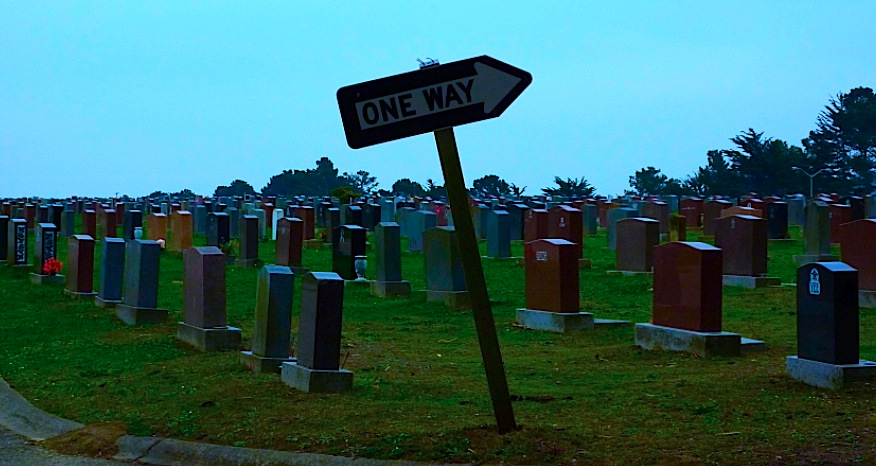



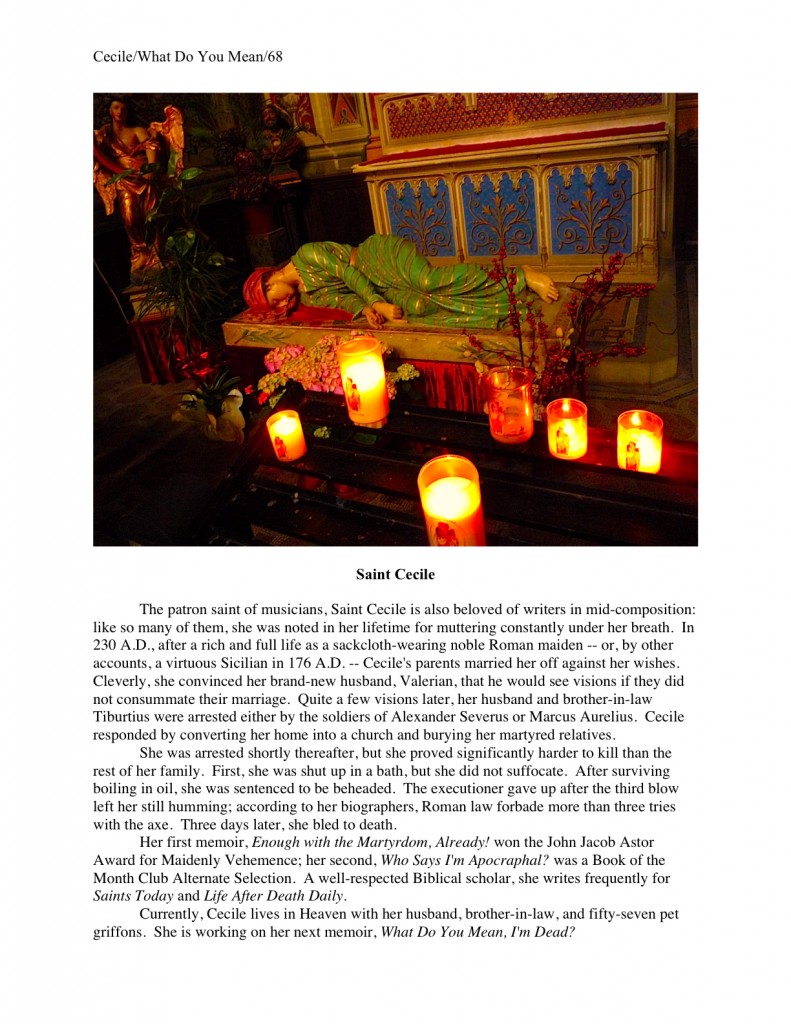

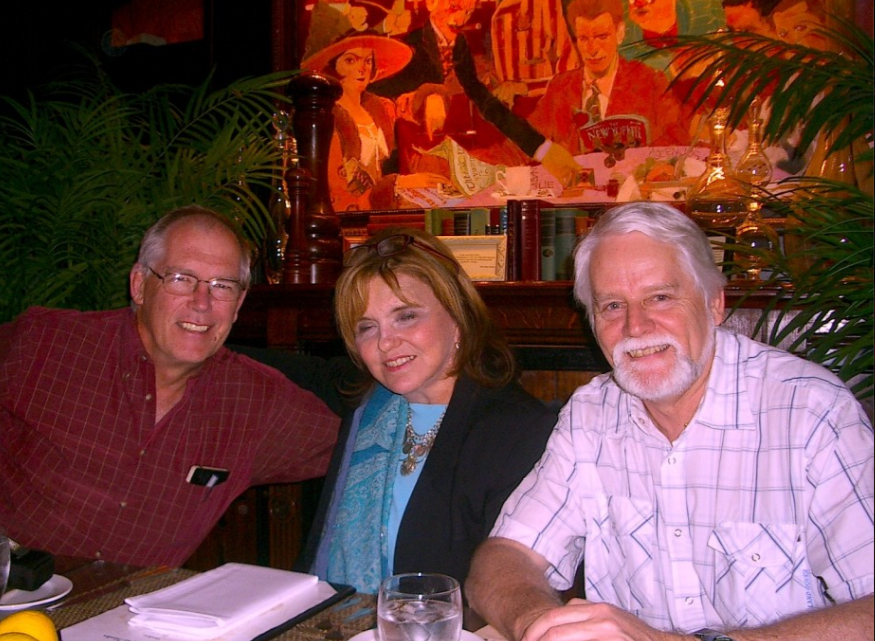
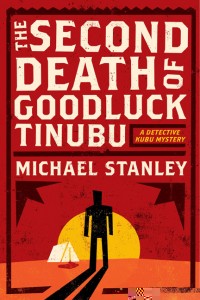
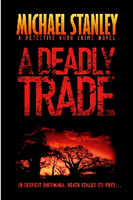 How can a man die twice?
How can a man die twice?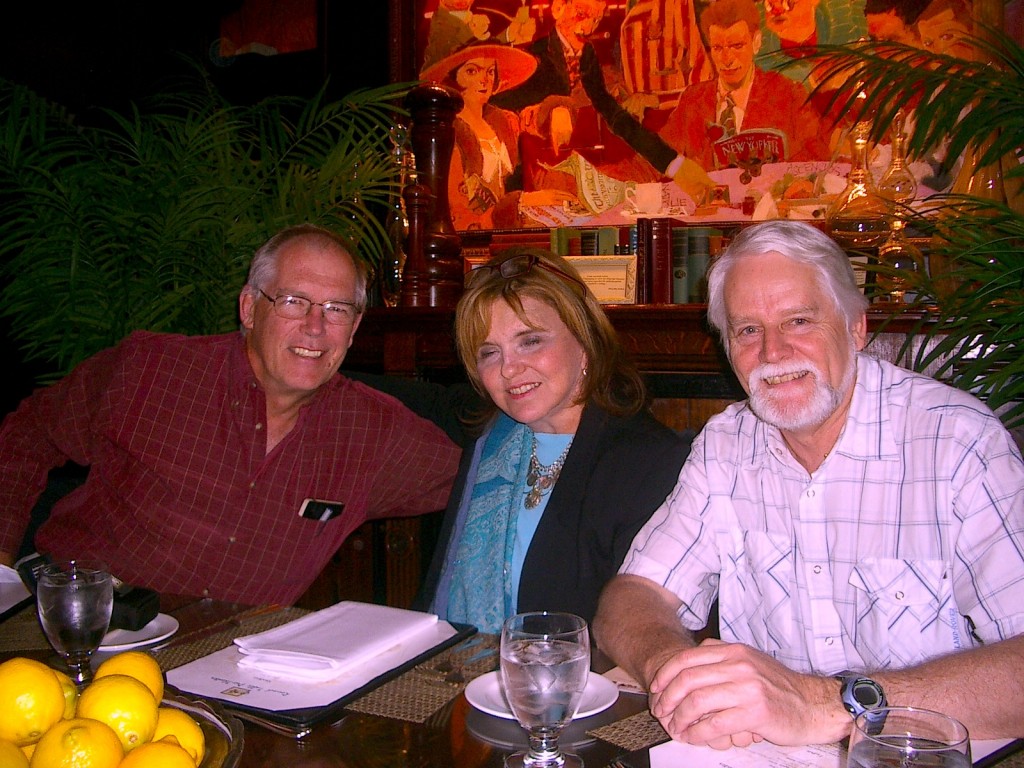
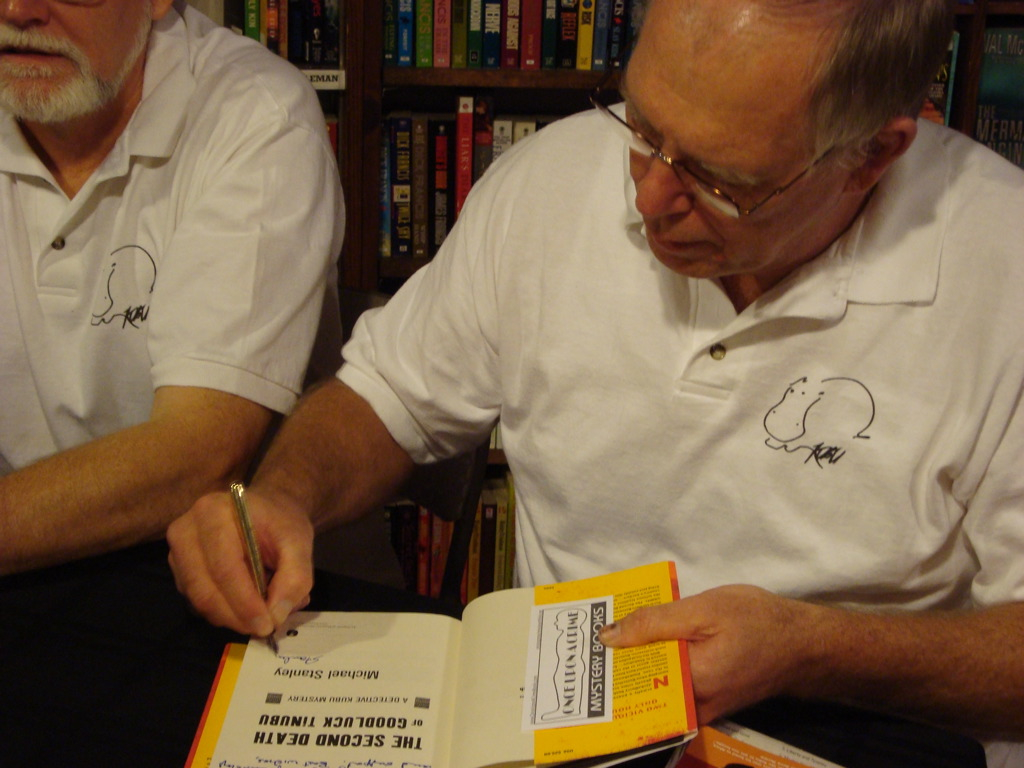
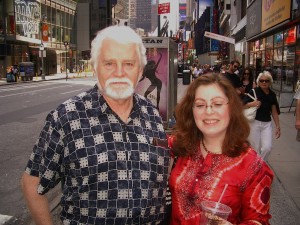
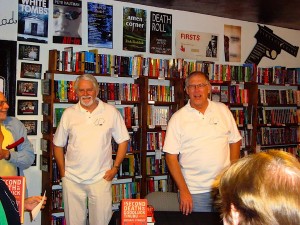
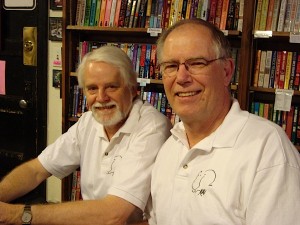
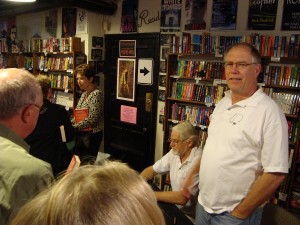
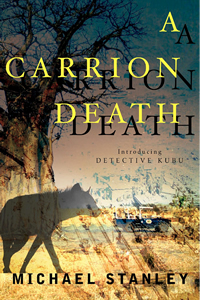
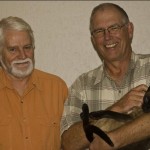 Michael Stanley is the writing team of Michael Sears and Stanley Trollip.
Michael Stanley is the writing team of Michael Sears and Stanley Trollip. 



